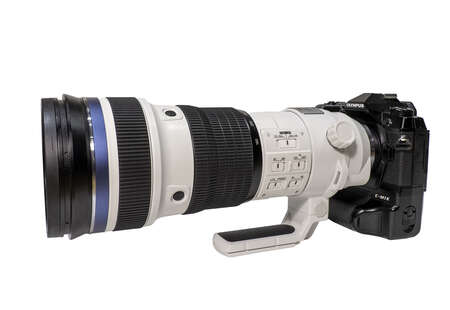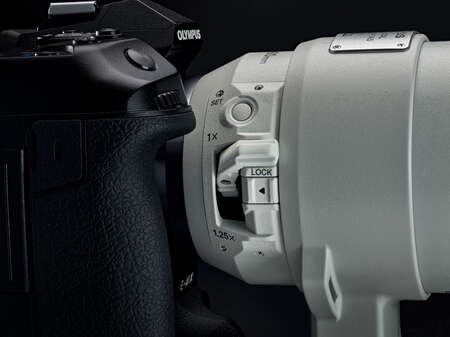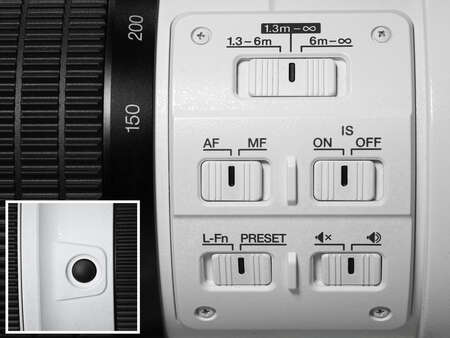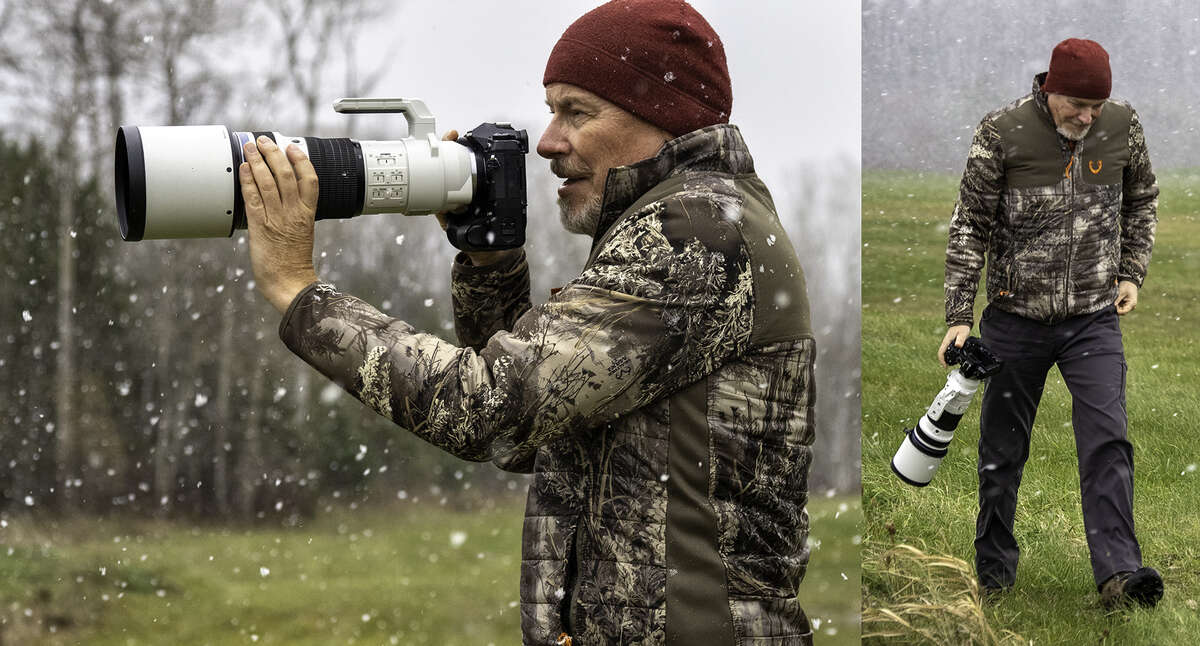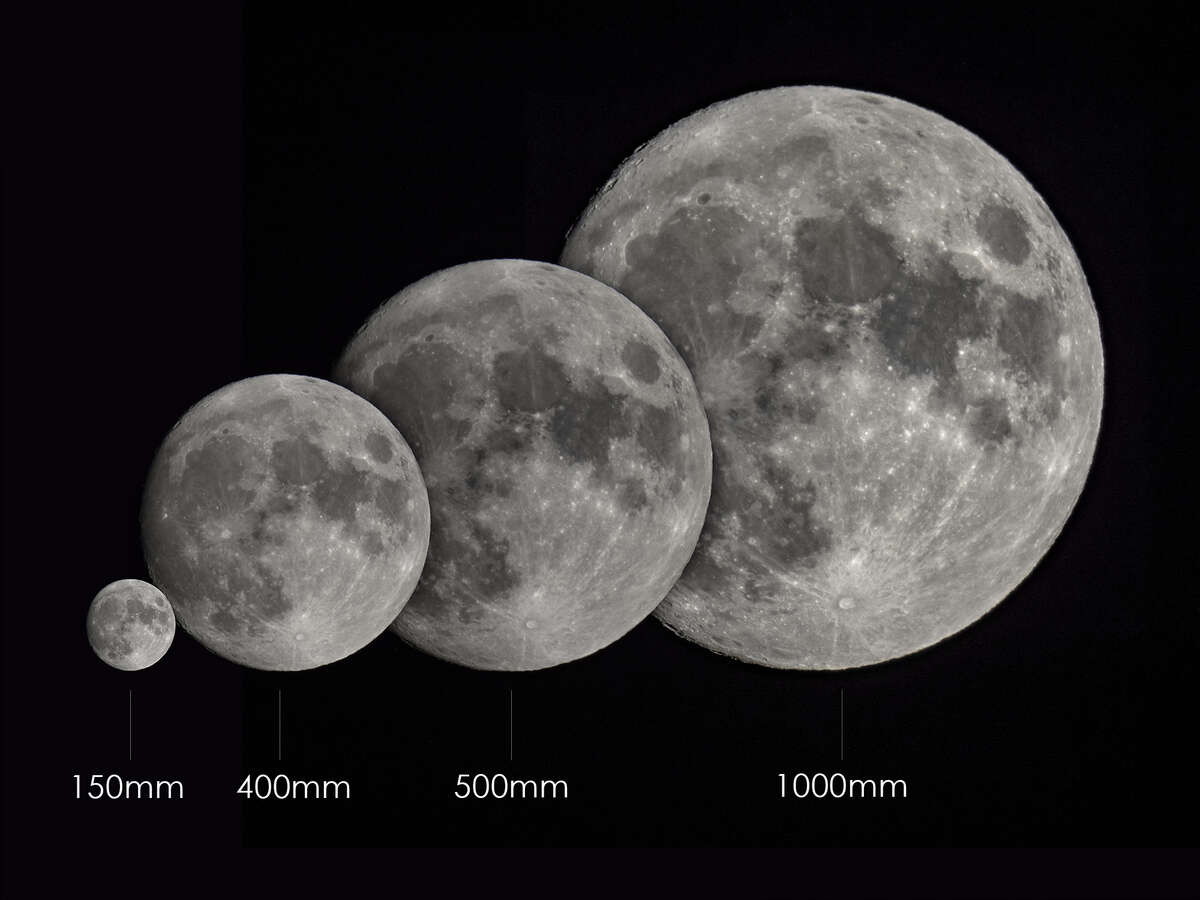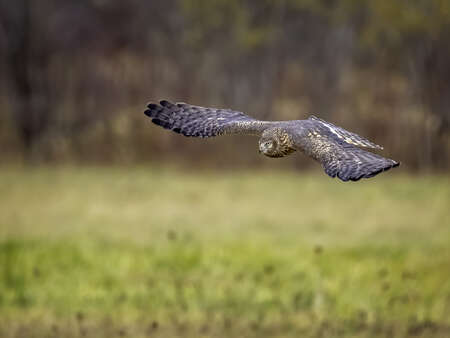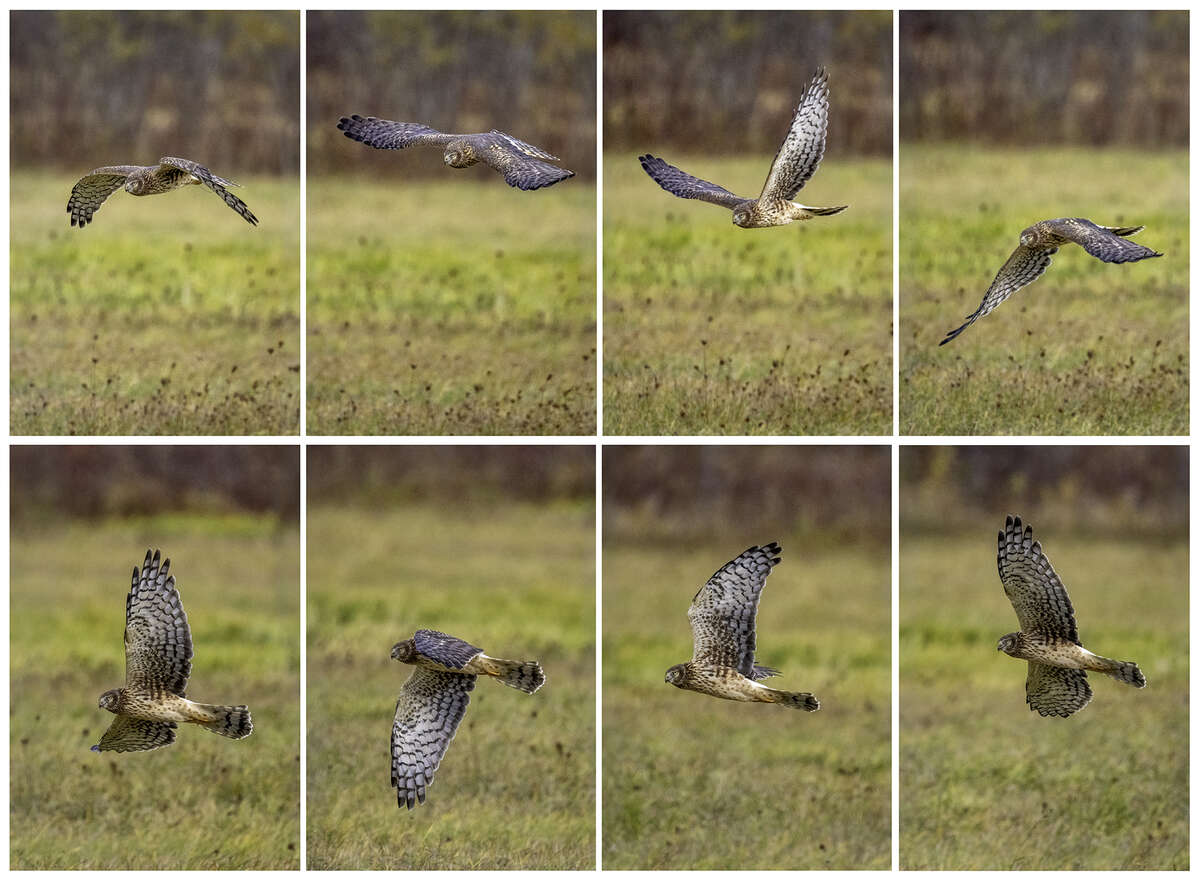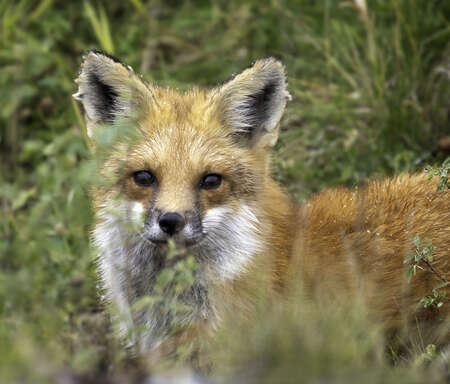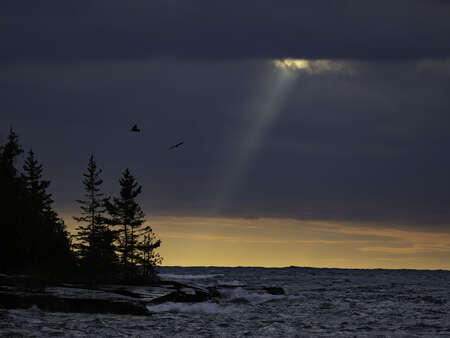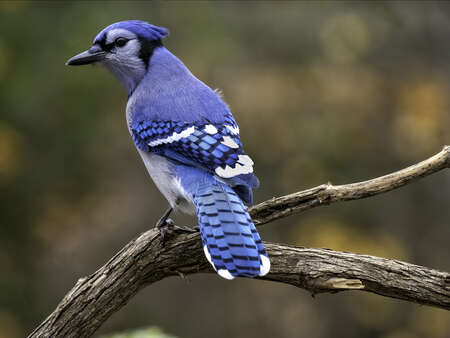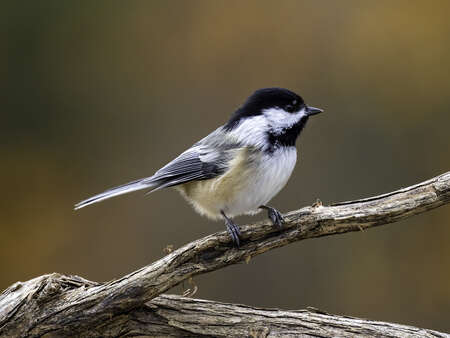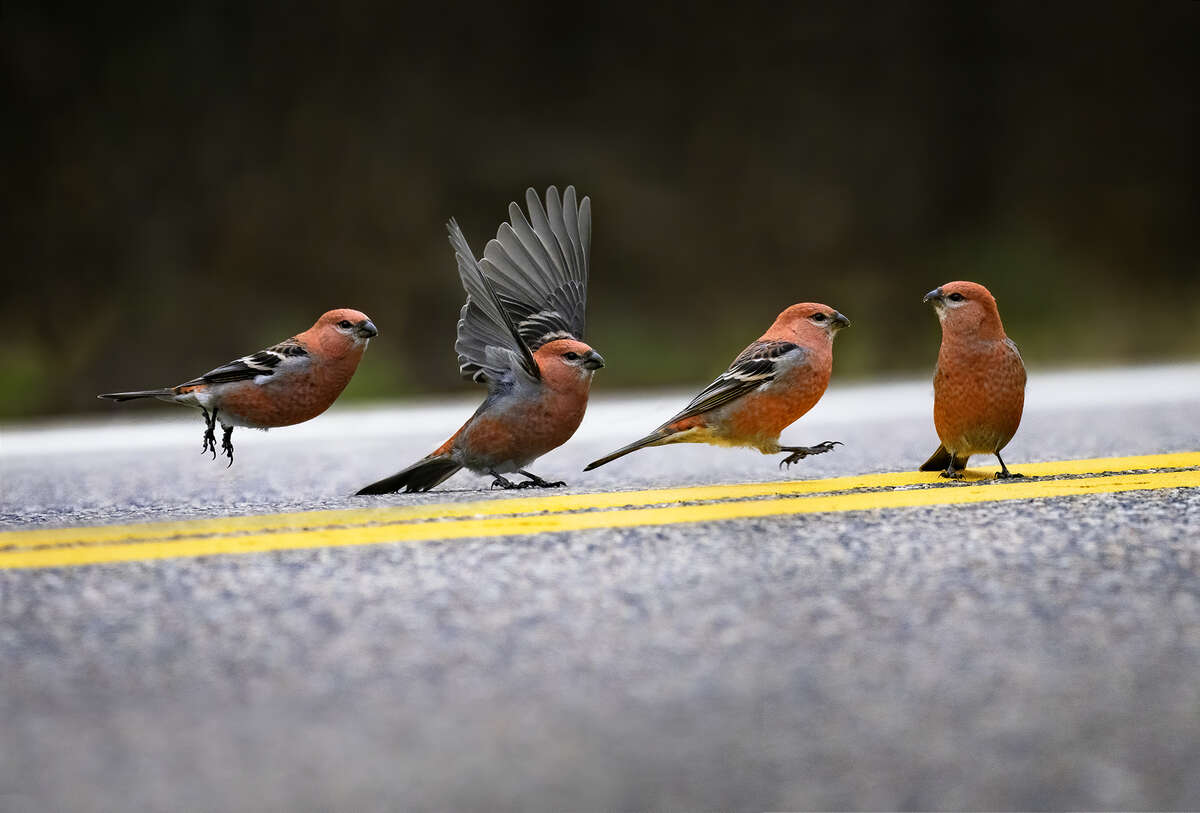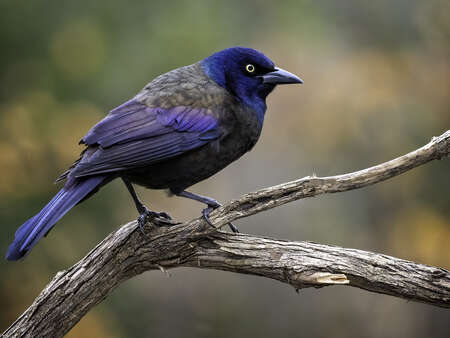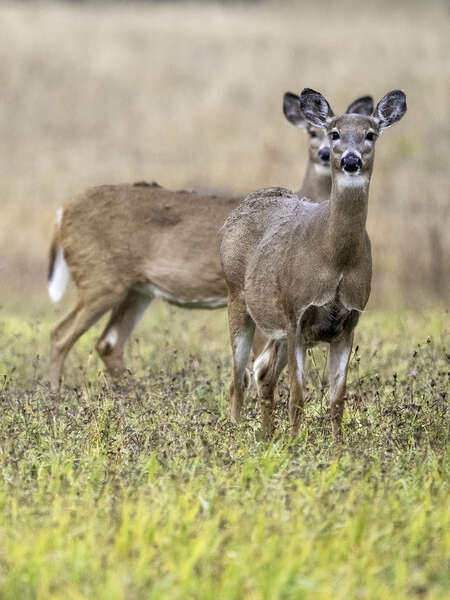Okay, let's cut to the chase. This lens rocks! It really does.
I've shot with practically every lens made by Olympus for the Micro 4/3 system and each one is built to very high standards. But the M.Zuiko 150-400mm F4.5 TC1.25x IS PRO stands out amongst these. I'll get to why in a moment, but just a reminder that this isn't a formal review. These are my first impressions based on 5 days of shooting with the lens.
When Olympus offered to send me a pre-production copy I was quite hesitant. We were heading into wintery weather, most of the migratory birds in my area had long gone, and finding other wildlife would be a real challenge. Plus, I would have the only one in North America (oh, the pressure!) In the end however, I'm so glad that I accepted the invite, because this lens is exceptional!
The Nuts and Bolts
When I first pulled this lens out of the box I was surprised to find that it was both smaller and lighter than I expected. It's still a big lens, but not uncomfortably so. Here is a look at some of the specs:
- Focal Length - 150mm - 400mm; with the built-in teleconverter - 187.5mm - 500mm
- Lens Construction - 28 elements in 18 groups; built-in teleconverter - 7 elements in 4 groups
- Focusing System - High speed imager AF
- Closest Focusing Distance - 1.3m throughout range, including with teleconverter
- IS Performance - 5-axis Sync IS with up to 8 stops of performance
- Filter Size - 95mm
- Dimensions - 314.3mm x 115.8mm
- Weight - 1875g (without lens hood or lens caps)
One of the things that sets this lens apart is that it has a built-in 1.25x teleconverter. This is controlled by a lever located on the right side of the lens that can be easily flicked up and down with your middle finger. It can also be locked into position if required. Just above the teleconverter switch is a SET button which allows you to set a specific focus point.
The two lower switches require some explanation. Behind the focusing ring are 4 black buttons. When the L-Fn PRESET switch is set to L-Fn those buttons operate as a programmable function button. However, when set to PRESET the black buttons will recall the focus point that you programmed using the SET button. Holding a black button down will also allow you to fine tune your focus using the focusing ring. I found this to be quite useful especially since this lens does not have the pullback clutch to switch to manual focus. The 'sound' switch controls whether or not the you will hear a beep when the black buttons are pressed if the preset focus point is engaged.
The lens collar is worth talking about. Like the collars on the other PRO telephoto lenses it is Arca-swiss compatible and is large enough to easily hold on to when carrying the camera/lens. It has two separate attachment points for a strap. The collar cannot be removed from the lens, but when the release knob is loosened it allows the lens to be easily rotated. With set locking points at 90-degree intervals it is easy to rotate from landscape to portrait orientation when mounted on a tripod.
The hood is made of carbon fibre which keeps it light and improves the overall balance of the lens. It attaches quickly with a set screw and has a velvet-like black interior lining that prevents unwanted glare from entering the lens.
The 150-400mm is considerably larger than the 300mm PRO or the recently released 100-400mm F5-6.3. Of course, there are 2 good reasons for this. Firstly, it is a constant f/4.5 throughout the 150-400mm zoom range, and it has a built-in teleconverter that extends its range to 500mm. That said, I found the lens quite comfortable to hold and carry. I used it with the E-M1X and found it to be perfectly balanced in my hand.
But it's White!
Yup, it's white. And there's a good reason for it. There are three layers to the white coating that together provide a heat shield to protect against rising temperatures from the sun, thereby protecting the interior components. Throw a camo lens cover on it and it's not white anymore!
Reach
Like many people I've been looking forward to this lens since it was first announced. I'm not a dedicated nature photographer, but I definitely want that extra reach for those times when I am out shooting wildlife. And what a reach it has! During the short time that I had the lens I found the 1000mm equivalent range to be ample for most situations. But if you want even greater reach you can attach the MC-14 or MC-20 teleconverters and effectively double that up to 2000mm.
The 150-400mm is fantastic at pulling in distant objects, but it also has an incredible close focusing distance of 1.3m throughout its zoom range. Normally when testing a lens like this I would search for butterflies or other small creatures to test out the close focusing. Well that wasn't possible in late autumn so I had to resort to other subjects. On one of my hikes I came across an old deer skull and thought, why not? Let's see how close I can get.
Performance
Okay, the boring stuff is over. So, how does this lens perform out in the field (or forest)?
One of the most challenging situations I faced was during my third day with the lens. I was hiking in a forested area when I came across a male ruffed grouse performing an obvious courtship routine for a nearby female. (Now this seemed odd since it was autumn, but hey, who am I to judge?!) My presence spooked the female and she flew a short distance away, but the male crawled under some deadfall and tried to hide. I approached the male slowly, got down onto my knees and tried to frame a shot. It was about 20 minutes before sunset, in very dimly lit conditions with lots of brush in my way, preventing a nice clear shot. I tried anyway. I quickly set the ISO to 2000, opened up the aperture and was able to get a shutter speed of 1/60s - not ideal for any type of wildlife shot. My subject remained quite still so I had a few moments to try and get a shot without any branches in my way.
I was impressed with how well the E-M1X and the 150-400mm acquired focus under some very difficult lighting situations, and even more impressive was the fact that I could get a rock steady shot when fully zoomed in, given the incredible image stabilization built into the lens (more on that later). Even with its larger size it was still easy to handle in a fairly tight space. After a few shots like the one above I gave the grouse some space and he emerged to continue his display.
With the female a bit of a distance away I opted to attach the MC-20 teleconverter and see how it would perform under real field conditions. Having the equivalent of a 2000mm reach is simply amazing. Focusing remained fast and accurate with a final image that was nice and sharp.
When photographing wildlife or sports the most important thing is to have the reach you need and to have fast and accurate focusing. The 150-400mm is incredible on both counts. I was achieving very high success rates even when my subjects were moving. Shortly after the lens arrived I hopped into the car and drove to a nearby lake to see if I could find some ducks. It was quite windy with a bit of snow falling. I came across a few waterfowl huddled together in the rough conditions. Even though they were bobbing up and down quite quickly I was impressed at how well the lens could acquire focus.
This lens is incredibly fast and accurate at focusing – better than any other lens I've used.
On a separate occasion I encountered a hawk in flight. I quickly switched to C-AF + Tracking and was very pleased that focus was maintained even with a cluttered background. It didn't lose focus throughout the entire sequence.
Shooting Scenarios
During my time with the 150-400mm I was able to shoot a wide range of subjects under a variety of conditions. I split most of my time between driving around looking for wildlife and hitting the hiking trails in my area. Many photographers I know are 'drive-by shooters', and I certainly have no issues photographing wildlife through my car window. The 150-400mm with the E-M1X may be the largest camera/lens combo that Olympus offers, but it still fit quite comfortably on the passenger seat so that it was at the ready when I encountered something worth shooting. One problem that I know many photographers have had with the older 300mm lens is that it is difficult to get a clean shot from your vehicle while it is running. I've experienced this as well and can only guess that the slight vibration of the vehicle interferes with the lens's IS. That situation seems to have been resolved with the 150-400mm. Several images in this post were photographed through my car window with no issues at all.
Although this lens is the largest within the Olympus Micro 4/3 arsenal it is an absolute lightweight when compared to comparable lenses from other manufacturers. While hiking, this camera/lens combo never slowed me down. The ergonomics are excellent. It was perfectly balanced in the hand, and whether I was carrying it by the camera grip, the lens collar or with my camera strap attached to the lens, it never felt too heavy. I love the fact that I can carry this on longer hikes and leave the tripod at home.
Like many photographers I enjoy doing some backyard birding so on one afternoon I set up a perch near one of my bird feeders and spent some time photographing the hungry visitors. This time I opted to use my tripod. Again, the lens was fast, accurate and provided some excellent bokeh.
Comparisons to the 100-400mm F5-6.3 IS Lens
Olympus has now released two telephoto zooms in fairly quick succession. Although they cover almost identical focal ranges, there are some key differences between the two.
The most obvious one is size. With a constant aperture and built-in teleconverter the 150-400mm is definitely the bigger of the two - about 110mm longer, 30mm wider, and 750g heavier. Both lenses have a minimum focusing distance of 1.3m, but with the 1.25x built in teleconverter, the 150-400mm has an overall reach of 500mm. This came in handy in a number of situations during my time with the lens.
Olympus is well known for its incredible weather sealing and rugged build and both lenses can definitely withstand the elements. The 100-400mm has a mainly plastic construction while the 150-400mm is made from lightweight but durable magnesium alloy. The 150-400mm also has a new fluorine coating on its front lens element that creates a hydrophobic surface. This means that moisture and dirt clean off easily. Given that I often find myself shooting in wet conditions this is a welcome addition, one that I hope makes its way to other future lenses.
Having used both lenses I have noticed that zooming and focusing is definitely smoother with the 150-400mm. One of my biggest complaints about the older 300mm PRO was how difficult it is to do finer manual focus adjustments. That is no longer the case. With both of the newer lenses it is easier to achieve more precise manual focusing. That said, the 150-400mm has a definite edge over the 100-400mm. One of the advantages that Olympus has over its competitors is the incredible image stabilization in both the camera bodies and many of its longer lenses. The IS in both of the newer zooms is excellent, but the 150-400mm provides up to 8 steps of Sync IS at 150mm when paired with the E-M1X and 6 steps at 400mm. That is impressive! And it certainly helped in the rather dull conditions that I found myself shooting in during my time with the lens. The 100-400mm does not have Sync IS, but does provide 3 steps with its own built-in IS.
Final Thoughts and Images
When I came up with the title for this article, I meant it. The M.Zuiko 150-400mm PRO truly is the ultimate zoom lens. This is not a rehashing of components from other lenses in a new package. Many of its features are exclusive to this lens. There is no doubt that a great deal of thought and innovation went into the design and performance of the 150-400. It is a professional lens in every sense of the word. The price point will put it out of reach for many photographers, but for those that decide to make the investment, it will not disappoint. It was built to be small, portable, fast, accurate, excellent in low light, with exceptional build quality.
ABOUT PETER
Web: creativeislandphoto.com
Blog: creativeislandphoto.com/blog
Twitter: @creativeisland4
Peter has been a dedicated Olympus shooter for nearly 40 years, and has found a way to combine his passion for photography with his love of teaching to develop photography workshops with a focus on landscape, wildlife and astrophotography. Peter’s work has been published in a number of magazines including Canadian Geographic, Shutterbug and Outdoor Photographer. He maintains his own blog with an emphasis on tutorials that assist others in bringing their photography up to the next level.
